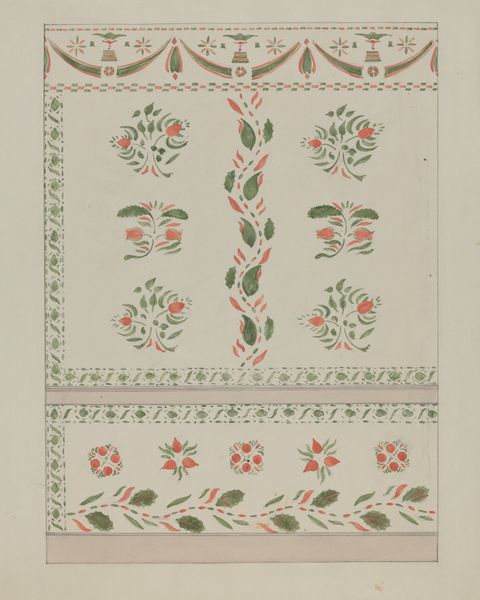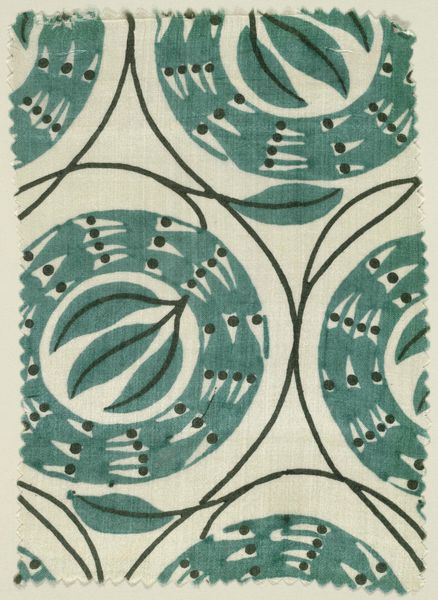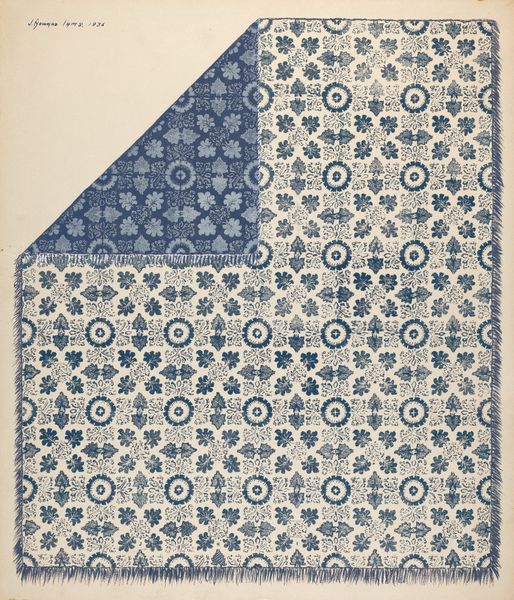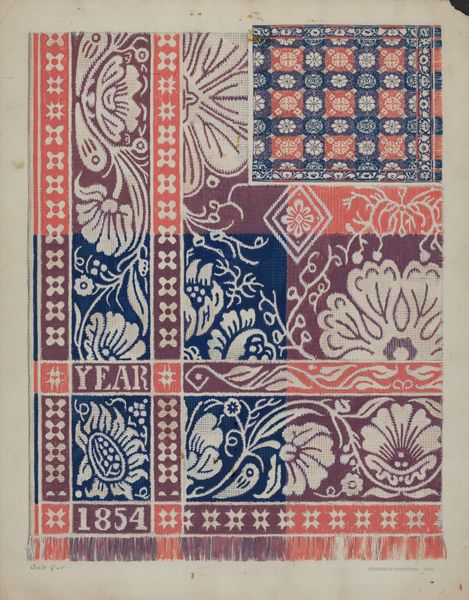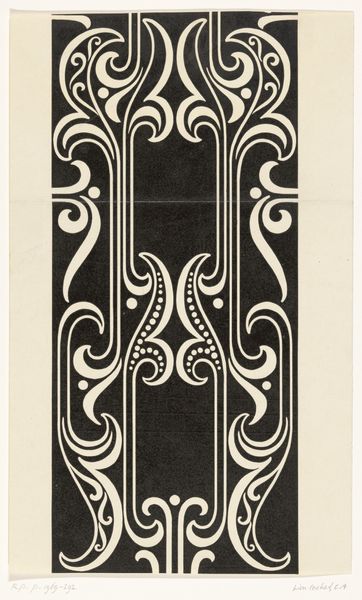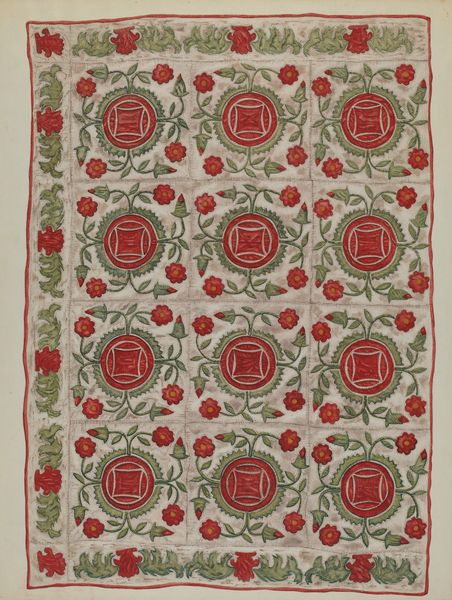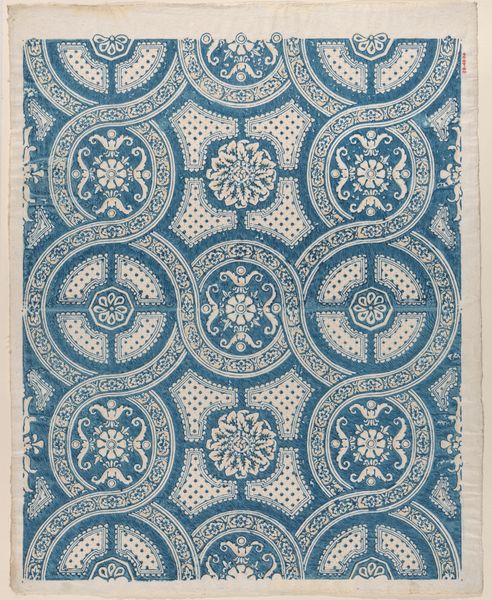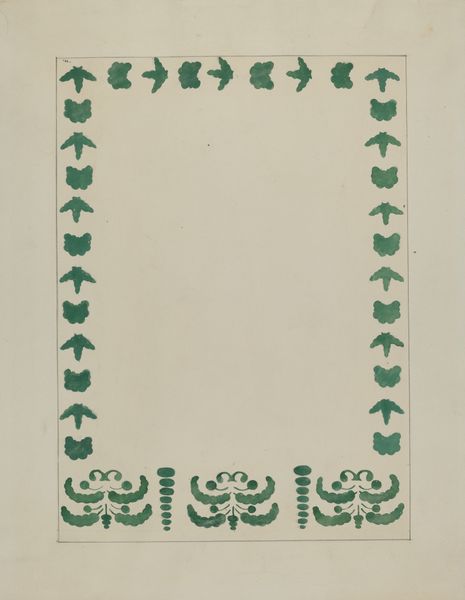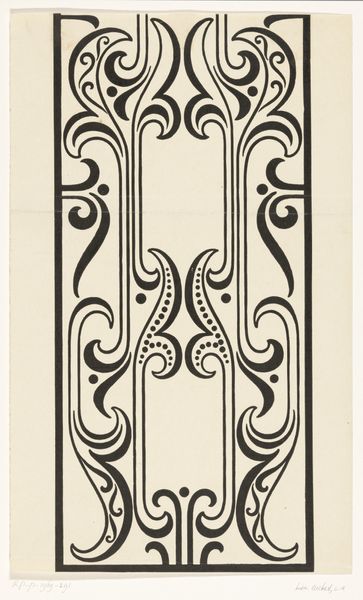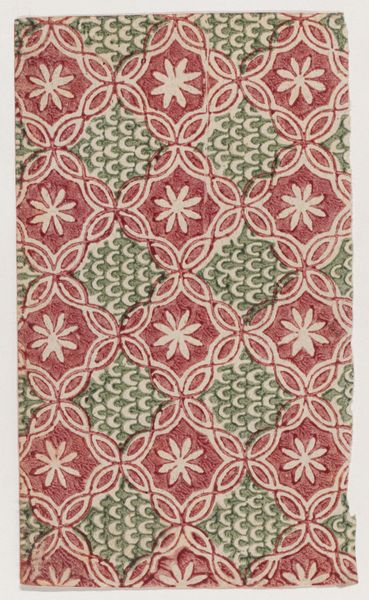
drawing, paper, ink
#
drawing
#
organic
#
pattern
#
paper
#
ink
#
organic pattern
#
geometric
#
decorative-art
#
imprinted textile
Dimensions: overall: 36.9 x 28.9 cm (14 1/2 x 11 3/8 in.)
Copyright: National Gallery of Art: CC0 1.0
Editor: Here we have "Wallpaper," created sometime between 1935 and 1942, rendered in ink and drawing on paper. It’s so decorative! It makes me think of a stylized garden trellis with alternating floral and geometric accents. What's your take on the work, seeing it now? Curator: Well, focusing on the intrinsic qualities of the work, the most salient element is the carefully constructed repetition. Notice how the rectangles and geometric motifs interlock, creating a complex yet ordered structure. Consider the interplay between the curvilinear and rectilinear forms. Do you see how this contrast contributes to a sense of visual rhythm? Editor: Yes, it’s like the shapes are dancing together. I hadn't thought of it as a "visual rhythm" before. Curator: Precisely. Moreover, consider the limitations the artist imposes on themselves regarding colour. The restricted palette—essentially two colours plus the ground—forces us to focus on the compositional arrangement and the subtleties within the repetition. What effect do you believe this restraint achieves? Editor: It makes the details stand out more. The differences in line weight and slight imperfections become important. It has both organic flow and geometrical precision, even with its slightly faded colours. Curator: Indeed. The beauty here arises from the formal arrangement of elements, the careful distribution of colour, and the inherent tensions established by these constraints. Editor: I appreciate that perspective. It really makes me see past the "pretty" surface and focus on how it's put together.
Comments
No comments
Be the first to comment and join the conversation on the ultimate creative platform.

